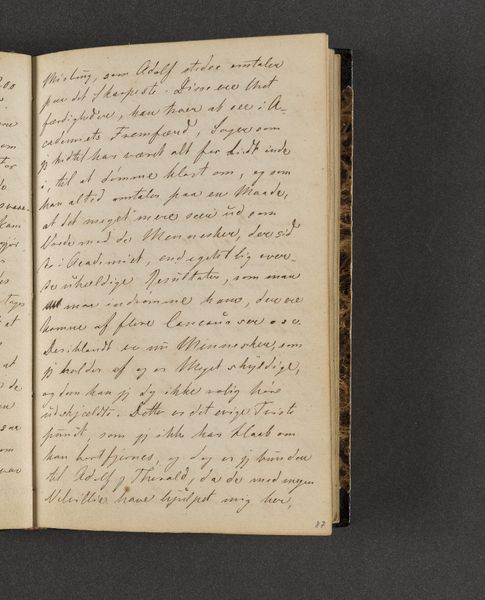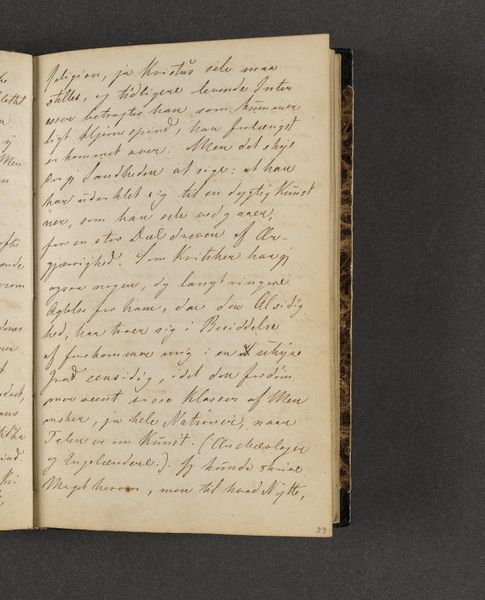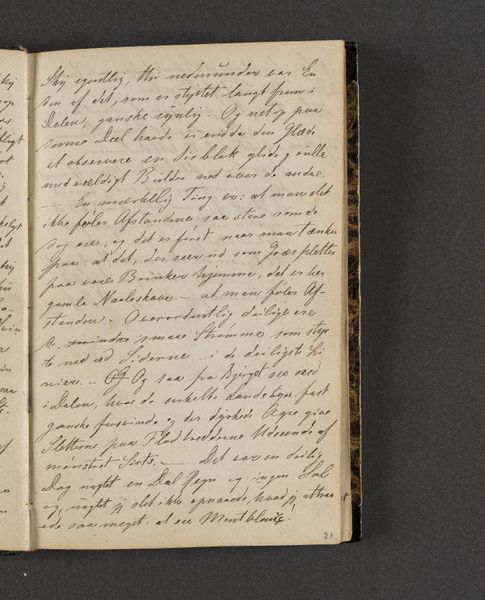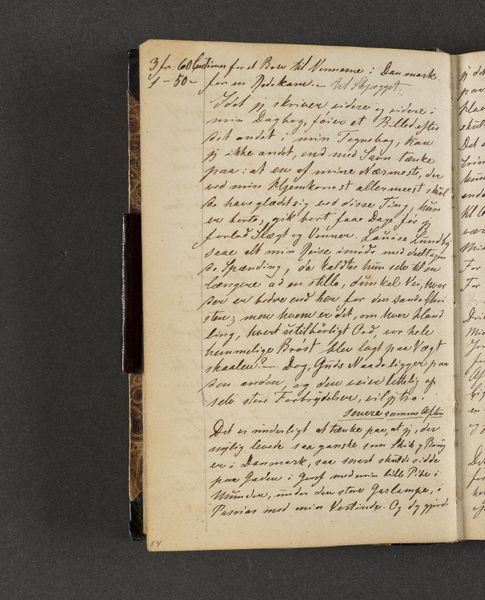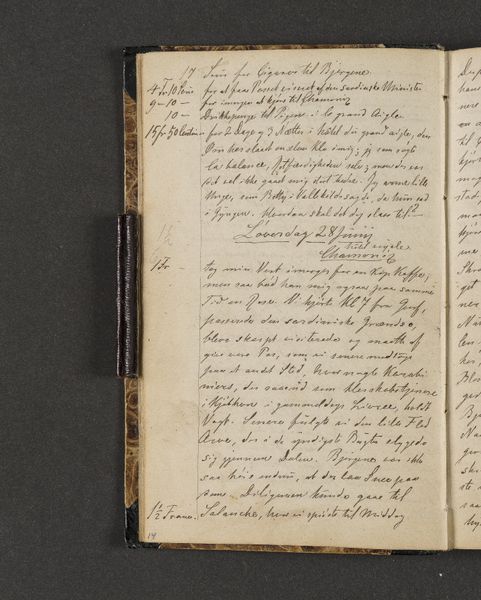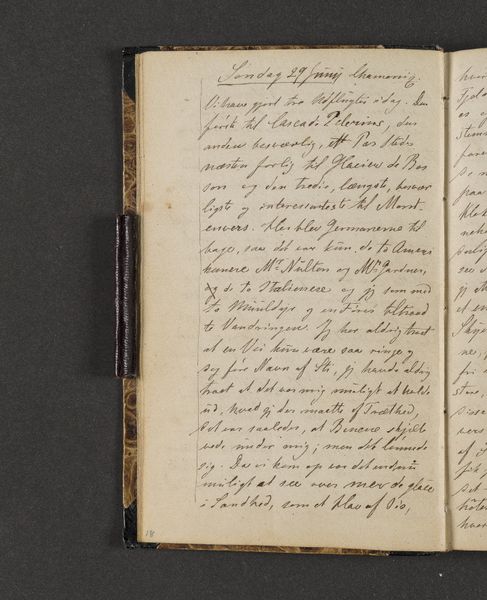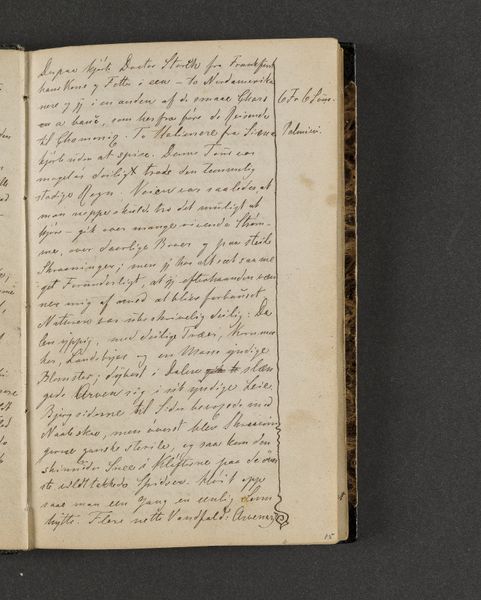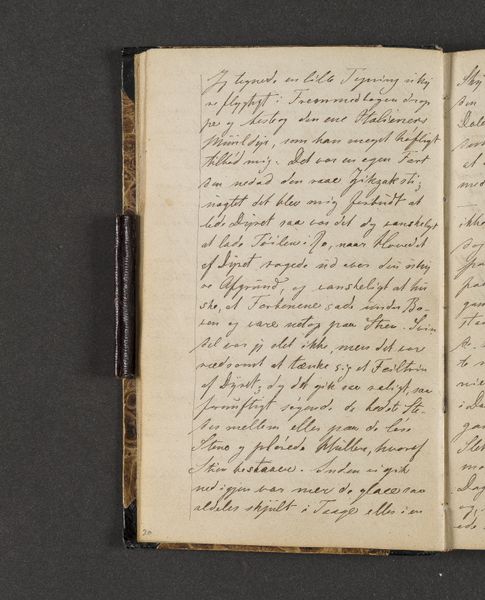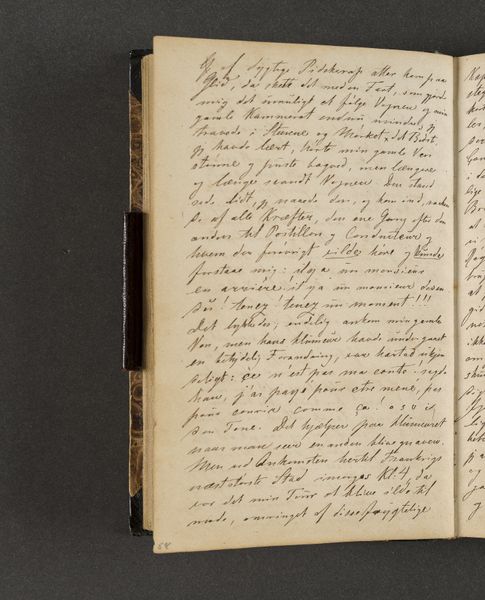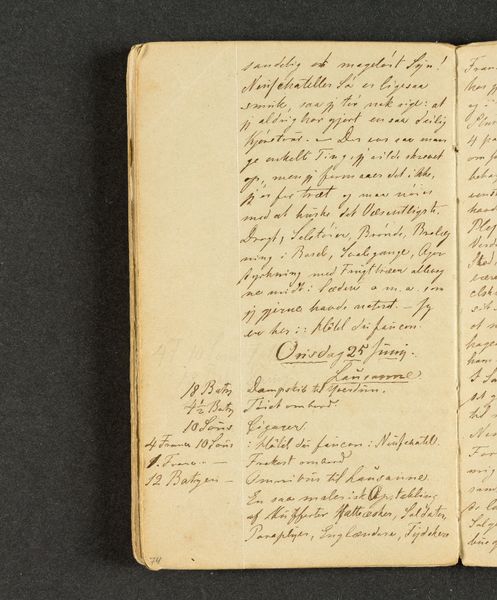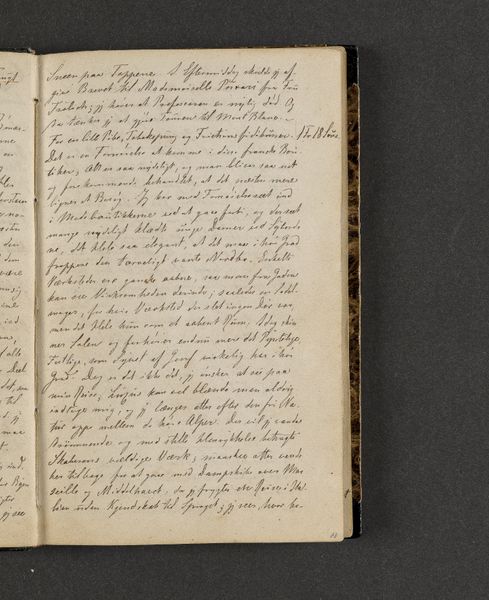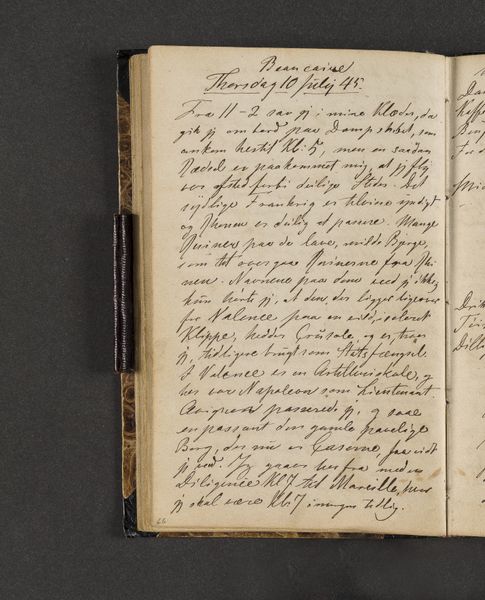
drawing, paper, ink
#
portrait
#
drawing
#
paper
#
ink
#
romanticism
Dimensions: 161 mm (height) x 103 mm (width) x 11 mm (depth) (monteringsmaal)
Curator: Before us is "Rejsedagbog," or "Travel Journal," created by Johan Thomas Lundbye in 1845. It’s rendered with ink on paper and currently resides in the Statens Museum for Kunst. Editor: It's immediately striking – the texture of the paper and ink gives it a tangible, almost intimate feel. You can sense the artist’s hand and the passage of time in the material itself. Curator: Indeed. Lundbye, deeply entrenched in Romanticism, used sketchbooks and journals like this as both travelogue and meditation. The visible script holds significance. Each stroke reveals his immediate thoughts and impressions as a Danish Golden Age artist. It also echoes how artists preserved impressions of places through sketches and quick notation of key ideas for later work. Editor: I'm interested in the relationship between the artist's physical journey and the material qualities of this journal. The texture of the paper, the ink used…these were the tools he used to translate a lived experience onto something permanent. It prompts me to think about access, and even class perhaps; Who had access to quality paper like this in 1845? Curator: Precisely. His artistic journeys, even within the confines of this book, serve as psychological landscapes as well, rendered vividly by literary heroes Caravaggio, Titian, and Perugino, as recalled in Lundbye's script. The mention of classical artistry underscores Lundbye’s search for an artistic genealogy, embedding himself in that lineage. It's more than travel; it’s artistic ancestry, too. Editor: Absolutely. It reinforces how artistic practice itself becomes a dialogue between present making and past influence. One can examine how Lundbye chose particular tools and paper quality based on an accepted artistic culture from a broader history. The romantic style emphasizes emotional content through its attention to materiality itself – a feedback loop between expression and resource. Curator: Reflecting on the cultural implications helps us decode his references, linking his artistic process to both self-discovery and cultural belonging. Editor: Yes, seeing how the mundane like the paper he holds interweaves itself to represent lofty references reveals unexpected dimensions.
Comments
No comments
Be the first to comment and join the conversation on the ultimate creative platform.
